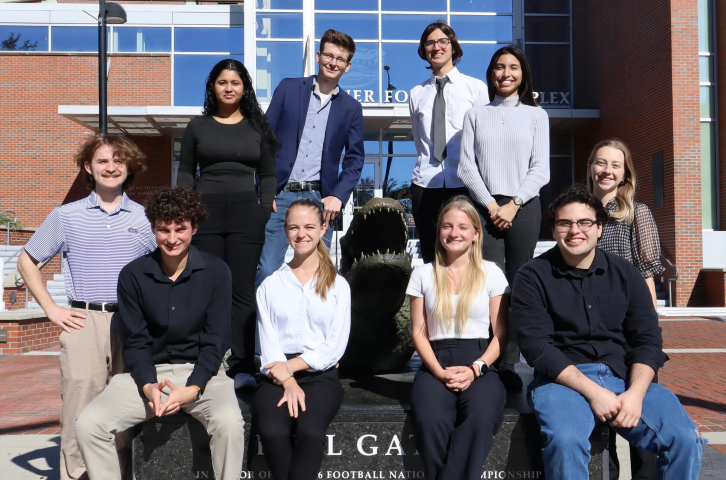Team Members

Alexander McLaughlin, Emma Patterson, Ethan Mitchell, Isabella Lantzy, Kolby Wade, Mahika Agarwal, Sydney Buck, Thomas Casademont, Tyler Uecker, Valeria Urrego-Hernandez
Abstract

P3 was tasked with developing an autosampler for Dr. Jing Pan of the University of Florida. The main objectives of the team were to create a compact, maintainable, and precise system without reaching the high price point of other market competitors. The body of the sampler is composed of a frame and bolted-on panels. Most panels are removable, allowing for ample access into the system for repairs and maintenance. In addition, the panels contain a layer of insulation, lessening the heat loss through the housing and increasing efficiency. Samples are moved from the vials with a syringe system attached to a Core-XY gantry. Three different interchangeable syringes are available for the system, keeping sampling errors low and minimizing sampling time to under 1.5 seconds for all sample possibilities. The thermal system is driven by four Peltier plates and two fans. These plates have a much smaller footprint than a traditional refrigeration system, contributing to the smaller overall footprint of the machine. Two plates are dedicated to cooling, and two to heating. In addition, fans are constantly circulating air through the system to encourage convention and prevent temperature gradients. The fluids system is designed to give precise control over the sample behavior without sacrificing sampling time. A second syringe is plumbed to the clean water tank to provide 290 kPa of pressure to the system and rapidly push samples through. This syringe also can flush large volumes of clean water through the system, achieving three full flushes in roughly 12 seconds. A needle valve is located directly upstream of the microfluidic device, metering the volumetric flow rate to what was specified by the user. Multiple check valves and a five-micron filter are also located in the system to prevent contamination.
3D Interactive Product Model
The following is an interactive 3D model of the product design. You can view and rotate the product assembly in different orientations and views, including an exploded view to see the various parts that make up the assembly.
